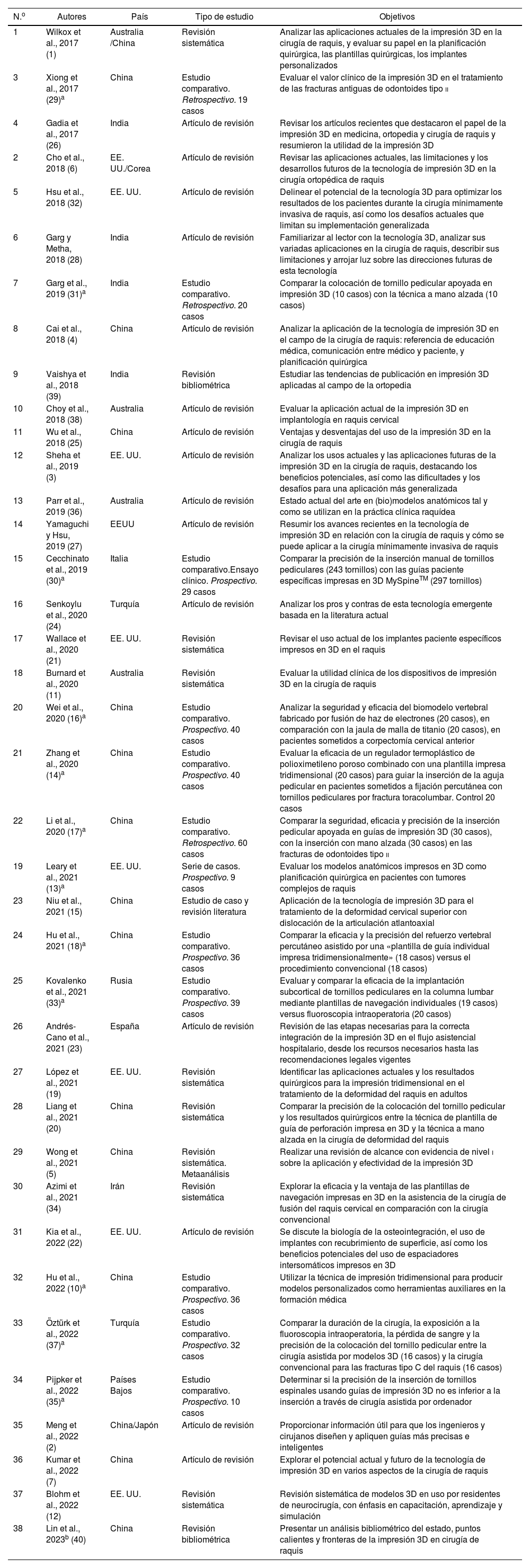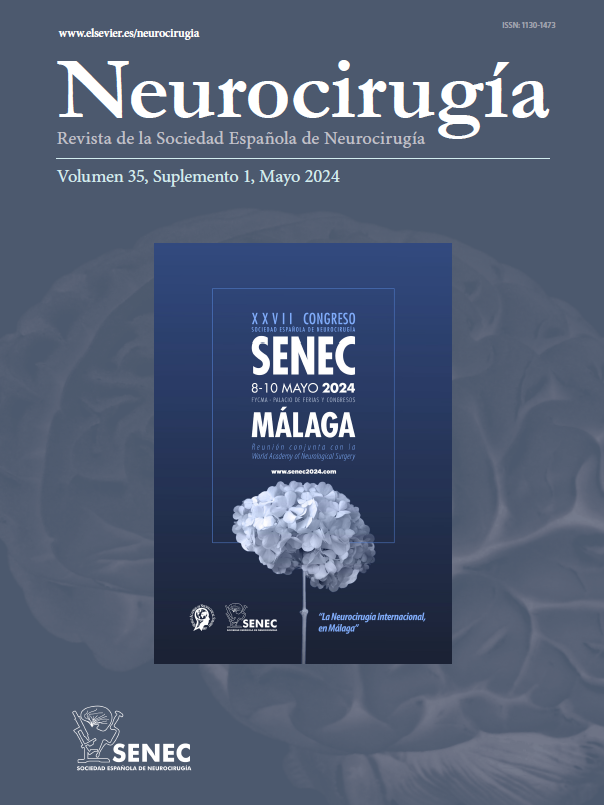El objetivo principal de este estudio ha sido demostrar por qué la impresión aditiva permite hacer más visibles y entendibles los procesos patológicos quirúrgicos complejos que afectan al raquis, aumentando la precisión, la seguridad y la fiabilidad del procedimiento quirúrgico.
MetodologíaSe realizó una revisión sistemática de los trabajos publicados en los últimos 10 años, sobre la cirugía de raquis asistida por impresión 3D, de acuerdo con la declaración PRISMA 2020. Con las palabras clave «printing 3D» y «spine surgery» se hicieron búsquedas en las bases de datos Pubmed, Embase, Cochrane Database of Systematic Reviews, Google Scholar y Opengrey, que se completó con la búsqueda manual a través de la lista de referencias bibliográficas de los artículos que fueron seleccionados siguiendo los criterios de inclusión y exclusión definidos.
ResultadosDel análisis de los 38 estudios seleccionados resultó que la impresión 3D es útil en la planificación quirúrgica, en la enseñanza médica, en la relación médico-paciente, así como en el diseño de plantillas de navegación e implantes de raquis y, en investigación, ofreciendo un magnífico apoyo al proceder quirúrgico.
ConclusionesEl uso de biomodelos impresos de forma tridimensional permite: hacer más visibles y entendibles los procesos patológicos quirúrgicos complejos que afectan al raquis; aumentar la exactitud, precisión y seguridad del procedimiento quirúrgico; y abrir la posibilidad de poner en práctica tratamientos personalizados, fundamentalmente en la cirugía tumoral.
The main objective of this study has been to demonstrate why additive printing allows to make complex surgical pathological processes that affect the spine more visible and understandable, increasing precision, safety and reliability of the surgical procedure.
MethodsA systematic review of the articles published in the last 10 years on 3D printing-assisted spinal surgery was carried out, in accordance with PRISMA 2020 declaration. Keywords «3D printing» and «spine surgery» were searched in Pubmed, Embase, Cochrane Database of Systematic Reviews, Google Scholar and Opengrey databases, which was completed with a manual search through the list of bibliographic references of the articles that were selected following the defined inclusion and exclusion criteria.
ResultsFrom the analysis of the 38 selected studies, it results that 3D printing is useful in surgical planning, medical teaching, doctor–patient relationship, design of navigation templates and spinal implants, and research, optimizing the surgical process by focusing on the patient, offering magnificent support during the surgical procedure.
ConclusionsThe use of three-dimensional printing biomodels allows: making complex surgical pathological processes that affect the spine more visible and understandable; increase the accuracy, precision and safety of the surgical procedure, and open up the possibility of implementing personalized treatments, mainly in tumor surgery.
Article

If it is the first time you have accessed you can obtain your credentials by contacting Elsevier Spain in suscripciones@elsevier.com or by calling our Customer Service at902 88 87 40 if you are calling from Spain or at +34 932 418 800 (from 9 to 18h., GMT + 1) if you are calling outside of Spain.
If you already have your login data, please click here .
If you have forgotten your password you can you can recover it by clicking here and selecting the option ¿I have forgotten my password¿.














